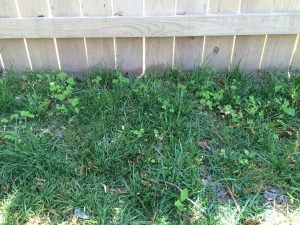Autumn has arrived in North Carolina, bringing with it the final harvest of bell peppers, roma tomatoes and serrano peppers.The herb garden has brushed off the first few light freezes and stands ready to make meals fragrant and savory for months to come. I am confident that the thyme, oregano and sage will over winter well and hope that the french tarragon and parsley will also.Parsley is such a staple of fall and winter dishes that I have more growing on my deck. I have been poaching from the deck parsley for a few weeks thinking that it would not handle the frosts as well, but so far it is also doing wonderfully.In previous years I have repeatedly removed pine needles from the garden beds only to replace it with a different mulch. This year I have come to my senses and am embracing the pine trees taking care of mulching for me.Collards, carrots, cabbage and parsnips are tucked into their naturally (and effortlessly) mulched beds.The fall planting of sugar snap peas has been supplying tender pea shoots and now has peas forming as well.The hydroponic herbs were changed over 10 days ago to the varieties I know and love to cook with and are already doing quite well. I am growing 2 plantings each of my favorite basils and cilantros, 3 of the flat leaf parsley and just for fun I am trying to grow 2 red kales hydroponically.With the Super Bowl and attendant tomato starts almost 2 months away, this cozy, fall garden that is mostly taking care of itself feels like a recess.
Read MoreGreen Mulching
While looking for a readily available, organic mulch to compliment my semi-composted pine needles, I have learned that the list of mulching styles and materials is truly endless. The list of possibilities include but is not limited to: sheet mulching, lasagna mulching (which does not actually involve pasta), plastic mulching, deep mulching, green manure mulching (which is green, but not manure), straw mulching...as I said, endless.The option I found most interesting is green mulching, using plant matter that would otherwise go into the compost bins, instead applied directly on the soil as a biodegradable mulch, effectively cutting out the middleman.I have begun this process primarily with weeds in my yard and the few volunteer plants that come up in my garden. This week the main contributor has been the Yellow Woodsorrel that has popped up in clumps all around my yard.Yellow Woodsorrel, so called for the small, yellow flowers it produces, is an edible forage green that is commonly called 'false clover' in the midwest. It has appeared this year in such abundance that I can both have my cake and eat it too by using it as a primary green mulch. Below is the result of just a few minutes worth of pulling sorrel and mulching between asparagus crowns.For my foraging friends, the other edible forage plant I have in abundance this year is Common Chickweed. It has been blooming for months so I use it as a wild edible, but not as mulch to avoid introducing new seeds into the garden.The trick with using any plant you find in your yard (weed, grass or otherwise) as green mulch is to make sure you do not include the flowers or seeds. Even when the flowers seem small and closed it is better to pluck them off before tossing them between plantings."Earth knows no desolation. She smells regeneration in the moist breath of decay." ~ George Meredith
Read MoreMaking Lemonade
Unless I take the time to carefully pluck them out, one by one, before taking a garden pic, you have probably noticed the indecent number of pine needles lurking in the background of EVERY PHOTO I TAKE!Once upon a time I had big dreams of chicken wire leaf bins in my backyard to effortlessly convert the sweet gumball and maple leaves raked up each fall into garden gold over the course of a year. In these fantasies I would empty the bins the following fall and add the compost to my garden before starting the cycle over again.Instead, the home I purchased has pine trees. Loblolly Pine trees (Pinus taeda) to be exact and the leaves they shed do not turn into lovely compost over the course of a year but instead, remain defiantly pine needle-like for much, much longer.After a bit of debate and confirming that pine needles making soil acidic is actually an old wives tale, I decided to compost them anyway (note: this was my idea, not the pine needles').Then, magically, after two years of composting, I have...pine needles!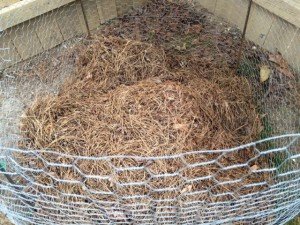 Pine needles don't turn into compost very quickly, but one of my goals this year is to mulch and I have been casting around for a sustainable, organic mulch that would work well in my garden beds. After two years of composting, I did get somewhat broken down needles that would work very well as a mulch.
Pine needles don't turn into compost very quickly, but one of my goals this year is to mulch and I have been casting around for a sustainable, organic mulch that would work well in my garden beds. After two years of composting, I did get somewhat broken down needles that would work very well as a mulch.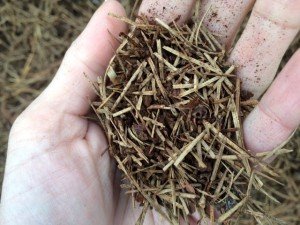 I started mulching around my transplanted collards while I wait for my direct sown spinach and sugar snap peas to fully sprout and I have to admit the result is quite nice.
I started mulching around my transplanted collards while I wait for my direct sown spinach and sugar snap peas to fully sprout and I have to admit the result is quite nice.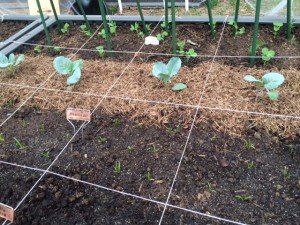 Because I have been turning the needles in their bin throughout the year, I know they hold moisture and attract earthworms so should work well as a mulch.
Because I have been turning the needles in their bin throughout the year, I know they hold moisture and attract earthworms so should work well as a mulch.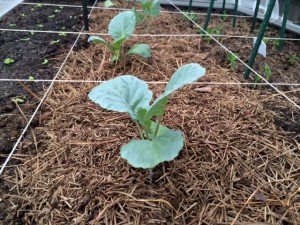 Okay, that was a completely gratuitous pic just because they looked so pretty.So now, I have made lemonade from my lemons and looking over my garden plan now I find myself in the position I could not have conceived of a year ago, I am not sure I have enough pine needles!
Okay, that was a completely gratuitous pic just because they looked so pretty.So now, I have made lemonade from my lemons and looking over my garden plan now I find myself in the position I could not have conceived of a year ago, I am not sure I have enough pine needles!

